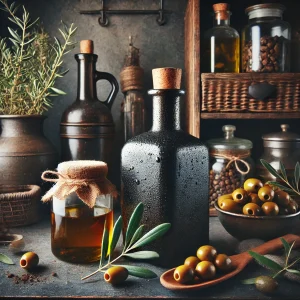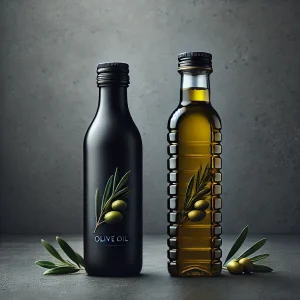Olive oil is often hailed as liquid gold, but not all bottles are created equal. The quality of olive oil can vary drastically depending on several factors. If you’ve ever wondered why some olive oils taste fruity and peppery while others seem flat, here’s the inside scoop on what affects olive oil quality. Let’s dive into the fascinating world of olive oil, where science and art come together to create a culinary masterpiece.
1. How Storage Conditions Can Degrade Oil
Proper storage can make or break olive oil quality. When exposed to heat, light, and air, olive oil begins to degrade, losing its flavor and health benefits.
The Science: Olive oil contains delicate compounds, such as polyphenols and antioxidants, which can break down when exposed to unfavorable conditions. Keeping olive oil in a cool, dark place is key to preserving its integrity.
Pro Tip: Store your olive oil in a dark glass bottle or a stainless steel container, away from the stove or windows.
Whimsical Thought: Think of olive oil as a shy introvert. It thrives in a calm, dark environment and hates the spotlight!
2. Why the Type of Olives Used Matters
Not all olives are created equal, and the variety of olive used can significantly impact the oil’s flavor, aroma, and quality.
Varieties to Know:
- Arbequina: Fruity and mild, perfect for drizzling.
- Picual: Peppery and robust, ideal for cooking.
- Koroneiki: Rich and aromatic, often found in premium oils.
Fun Fact: Different olive varieties are like grapes in wine-making. Each brings its unique flavor profile to the table.
Whimsical Thought: If olives attended a party, Arbequina would be the sweet charmer, Picual the bold adventurer, and Koroneiki the sophisticated guest with a story to tell.
3. The Impact of Processing Time on Flavor
Timing is everything in olive oil production. The sooner olives are pressed after harvest, the fresher and more flavorful the oil will be.
Why It Matters: Delays in processing can lead to oxidation, reducing the oil’s quality and flavor. High-quality olive oil producers prioritize same-day pressing to lock in freshness.
Scientific Insight: Freshly harvested olives contain enzymes that can cause fermentation if not pressed promptly. Quick processing preserves the oil’s natural compounds and vibrant taste.
Whimsical Thought: Imagine olives as impatient artists. They demand immediate attention to showcase their best work!
4. The Significance of Glass vs. Plastic Bottles
The packaging of olive oil isn’t just about aesthetics; it plays a crucial role in maintaining quality.
Glass Wins: Dark glass bottles shield the oil from harmful UV rays, preserving its flavor and nutritional properties. Plastic bottles, on the other hand, can leach chemicals into the oil over time.
Pro Tip: Always opt for olive oil in dark glass bottles. If your favorite oil comes in plastic, transfer it to a proper container immediately.
Whimsical Thought: Think of dark glass bottles as olive oil’s superhero capes—protecting their golden goodness from villainous UV rays!
5. How Exposure to Air Changes Olive Oil Over Time
Air is olive oil’s worst enemy. When exposed to oxygen, olive oil undergoes a process called oxidation, which can lead to rancidity.
The Science: Oxidation depletes olive oil’s antioxidants and alters its flavor. Over time, the oil becomes stale and loses its signature aroma.
Storage Tip: Always seal your olive oil tightly after use, and avoid leaving the bottle open for extended periods.
Whimsical Thought: Olive oil hates being “ghosted”—give it the attention it deserves by sealing it up tight after every use!
The Takeaway
Understanding what affects olive oil quality empowers you to choose and store your oil wisely. By paying attention to storage conditions, olive varieties, processing times, packaging, and exposure to air, you can ensure that your olive oil stays fresh, flavorful, and nutritious. Treat your olive oil well, and it will reward you with every golden drop!



